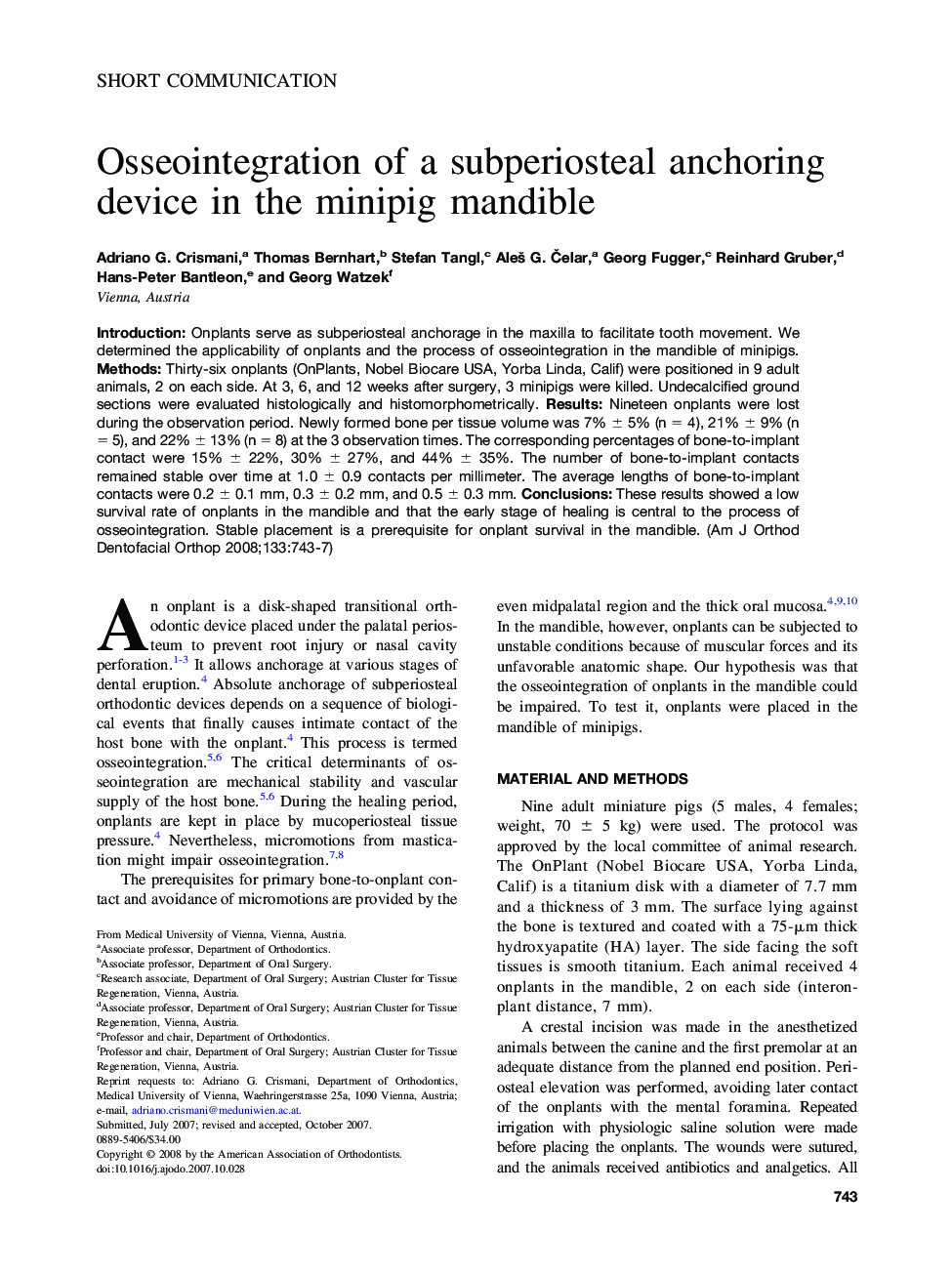| Article ID | Journal | Published Year | Pages | File Type |
|---|---|---|---|---|
| 3120244 | American Journal of Orthodontics and Dentofacial Orthopedics | 2008 | 5 Pages |
Introduction: Onplants serve as subperiosteal anchorage in the maxilla to facilitate tooth movement. We determined the applicability of onplants and the process of osseointegration in the mandible of minipigs. Methods: Thirty-six onplants (OnPlants, Nobel Biocare USA, Yorba Linda, Calif) were positioned in 9 adult animals, 2 on each side. At 3, 6, and 12 weeks after surgery, 3 minipigs were killed. Undecalcified ground sections were evaluated histologically and histomorphometrically. Results: Nineteen onplants were lost during the observation period. Newly formed bone per tissue volume was 7% ± 5% (n = 4), 21% ± 9% (n = 5), and 22% ± 13% (n = 8) at the 3 observation times. The corresponding percentages of bone-to-implant contact were 15% ± 22%, 30% ± 27%, and 44% ± 35%. The number of bone-to-implant contacts remained stable over time at 1.0 ± 0.9 contacts per millimeter. The average lengths of bone-to-implant contacts were 0.2 ± 0.1 mm, 0.3 ± 0.2 mm, and 0.5 ± 0.3 mm. Conclusions: These results showed a low survival rate of onplants in the mandible and that the early stage of healing is central to the process of osseointegration. Stable placement is a prerequisite for onplant survival in the mandible.
